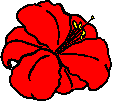 Shields
Gardens
Shields
Gardens
| Home |
| Daylilies |
| Rare Bulbs |
| Clivia |
| Seed Sales |
| E-Mail and Chat |
| Photo Gallery |
| Information |
| Sources |
| Guest Sites |
| Societies and Clubs |
| Links |
| People |
| About Us |
| Blogs |
In most of our climates, Clivia are of necessity houseplants in the colder months. Indoors, they should be located where they will get morning sun or bright, indirect light. Never place your clivia in an unshaded South or West window, in the Northern Hemisphere. In the Southern Hemisphere, avoid North facing and West facing windows if they are unshaded.
In the warmer months, it is good for Clivia plants to go outdoors. There are only a couple of points to keep in mind when deciding where to set your Clivia outdoors.
First, Clivia will burn in full direct sun, even in our more northern latitudes. So pick a spot with dappled shade from at least midday on. The morning sun and the very late afternoon sunlight will probably not burn the foliage.
Second, where there is abundant rainfall during the period when the clivia is outdoors, you may have to protect the plant from excess moisture. While an occasional rain is very good for the plant, heavy or prolonged periods of rain will increase the danger of rot. A good potting mix can compensate for this somewhat.
In the wild, Clivia grow naturally in forests. The plants grow on the ground under the trees, with their roots running through the natural litter on the floor of the forest. This provides them with abundant air around their roots and with a good organic mulch to grow through. Wild clivia do not as a rule send their roots down into the soil. In containers, your clivia will need to grow roots throughout the potting mixture.
A good time to repot or pot up clivias is in the spring, when they are just starting to grow vigorously again. You want them to be already starting to grow, so that their roots will re-establish as quickly as possible. Some expert clivia growers plant them in orchid bark mixes. Depending on whether you are just potting up a new seedling or you are repotting a mature plant, you can use either medium or coarse orchid mixes. Plant the roots spread out through the container and fill well around them with the orchid mix.
We prefer to use a gritty medium, composed of a peat-based soilless potting mix, sand, and granite chick starter grit. We combine them in roughly equal parts by volume, but varying toward more of the peat component in many cases. To fill a one-gallon container, use about 4 to 5 cups of each material. Mix them thoroughly, stirring them in a bucket with a clean trowel, for instance. We mix our potting media in 5-gallon buckets, never in the plant container itself.
The acidity/alkalinity of the soil is measured as pH. A perfectly neutral soil has pH 7.00, while alkaline soils have pH greater than 7 and acidic soils have pH less than 7. Clivias are said to grow best in slightly acid soil, with pH between 5 and 6.
In Nature, clivias are found mainly in parts of South Africa that receive all their rainfall in summer. The plants go through the winters nearly bone dry. You do not have to be so extreme with your clivia, but remember to watch the watering indoors. The roots of your plant will grow to where the water is. To get the most out of your plant, you want the roots to extend throughout the whole pot. You get this by how you water. When you water your clivia, water it thoroughly. Be sure that water runs out the bottom of the pot. This serves two purposes.
First, it flushes any accumulating salts out of the medium. Unless you are using water purified by reverse osmosis, distilled water, or rain water, the water you use will contain inorganic salts. Most public water supplies provide hard water, so called because it contains dissolved limestone as calcium and magnesium salts. If your water supply is softened, to remove the calcium and magnesium, it will contain sodium in their place. In either case, there will be a gradual build up of salts in the potting medium.
Secondly, watering thoroughly each time will keep the potting medium in the lower part of the pot watered. By watering all the way down into the pot each time, you encourage the roots to grow downward when they have used up the water nearer the surface of the medium. Too much water in the lower part of the pot could mean conditions that favor rot are developing. Avoid this by letting the potting medium become dry to the touch. Work your finger down as far into the medium as you can when checking. You can check the condition at the bottom by looking through the drainage hole there.
Remember: It is very hard to hurt a Clivia by letting it go dry. Until you have the "feel" of caring for your clivia, it is always best to err on the side of watering too infrequently.
Feeding your clivias: Proper nutrition is also a requisite for a healthy and flowering clivia plant. We offer a discussion on plant nutrition: ![]()
Does your clivia flower? If not, try checking our page on Growth and Flowering: ![]()
For information about this account, contact:
James E. Shields, webmaster at <shieldsgardens@gmail.com>
10 February 2012
© Copyright 2012 by James E. Shields. All rights reserved.